Yes. AdWords converts better than most other channels. Anywhere, ever.
But. That doesn’t mean it’s the only option. Or even the best option.
Two reasons why:
First, your cost per lead tends to be higher than other inbound channels. Chiefly because…
Second, AdWords doesn’t scale as well as other options. So you hit a point of diminishing returns. ‘Cause only 3.4% of search queries results in an AdWords click.
That ain’t a lot. ‘Specially on your ~5-10 niche keywords that actually convert.
The trick is to turn your attention from the bottom of the funnel back to the top.
Here’s why the top of your funnel is almost always more profitable than the bottom.
Closing and scaling BOFU deals isn’t sustainable
AdWords has intent. People search, click, and opt-in or buy.
It’s literally trained people to give you money.
It’s the ‘last touch’ so often that it becomes “easy to track ROI.” So like any self-fulfilling prophecy, the more attention it gets, the more “it works.” The more budget and labor and buy-in.
The problem is scale.
Especially when you’re paying $25 to $50+ per click. (Or more — I see you insurance and law.)
Conversions might be good on AdWords. But in many cases there’s (1) not enough to grow your business past six figures. Or (2) there’s not enough margin to reinvest in other areas.
Bottom-of-the-funnel advertising like this works well because you can throw down a few bucks and see a few more bucks come in not long afterward.
But here’s where more problems crop up.
High-end CPCs dramatically push up your Cost Per Leads. That, in turn, pushes up your minimum monthly ad budget. So it’s not uncommon to see ~$30k/month budgets in competitive niches on the low end (I’ve worked on a few myself).
You need so many leads to turn into customers. So you need to cast the net wide enough to convert a few measly percentage points.
Here’s the additional wrinkle, though.
According to a Salesforce B2B benchmark report, it takes an average of 84 days for a lead to become an opportunity:
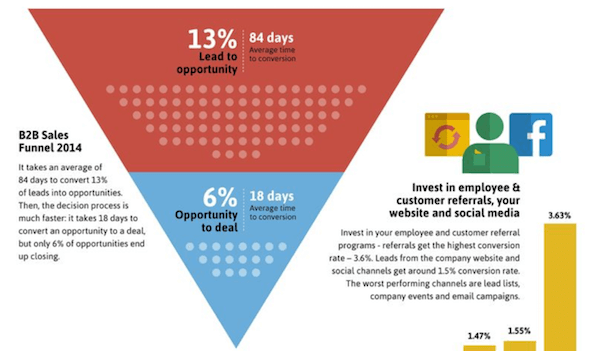
Image Source
And that’s not even a final sale.
84 long, hard days to transition from a lead to an opportunity, and 18 more days to close the deal.
Now. What are your payment terms? Net 30 or worse?
You’re now looking at not recouping a single dollar from that $30k/month budget until the next quarter (at the earliest).
So in reality, you need like four or five times that budget to sustain you. It’s like working capital in finance. You need enough to keep the lights open until the money, eventually, flows back into your bottom line.
Fortunately, all hope isn’t lost.
There’s a powerful antidote to a sluggish, budget-sabotaging funnel. It goes by the name of: Brand Awareness.
The stuff that big, mega enterprises have invested in for years. But most SMBs and tech geeks shy away because it “doesn’t convert.”
Generating brand awareness is a cheap investment
Brand awareness is typically the goal of any top-of-the-funnel campaign.
You want to start positioning your brand favorably within the minds and hearts of consumers.
Unfortunately, it’s often overlooked. It’s the Great Brand vs. Performance Marketing debate.
On the one hand, ‘branding’ is like a clichéd buzzword that’s lost all meaning. And on the other, it’s only seen as viable for large companies with massive budgets. It’s a “nice to have,” not a “must have.”
To make matters worse, it’s nearly impossible to draw a direct line from brand building activities to sales. So it gets dismissed by all hardcore data geeks (even when data itself lies).
But here’s the thing.
When done correctly, brand building is an investment in future sales.
Take a look at Facebook ad expert Jon Loomer’s current ad campaigns:
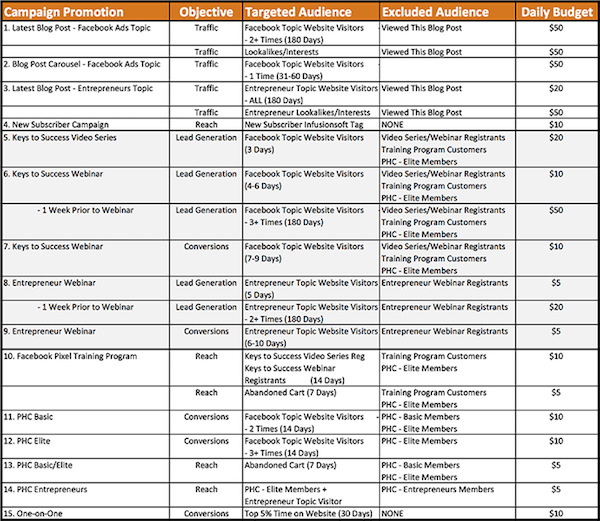
Image Source
What do you notice?
First off, it’s all divided by a typical marketing/sales funnel.
Traffic/reach – TOFU
Lead generation – MOFU
Conversions – BOFU
Now take a look at the daily budgets for each. This is where it gets interesting.
He dedicates the majority of his budget to-top-of-the-funnel marketing activities.
Around $1,500 per month goes to top-of-the-funnel campaigns, and he only sets $300 aside for MOFU and BOFU tactics.
That’s a massive difference.
Why?
Why on earth would he invest $1,500 a month into campaigns that have zero chance of converting?
Why not dump that money into MOFU and BOFU campaigns with sale-based offers?
Because he’s making a future investment. You can’t convert sales when there isn’t enough built-in demand in the first place.
Let me explain with some data.
Nielsen conducted a massive study on understanding what drives sales, and they found that 59% of people buy products and services from brands that they recognize.
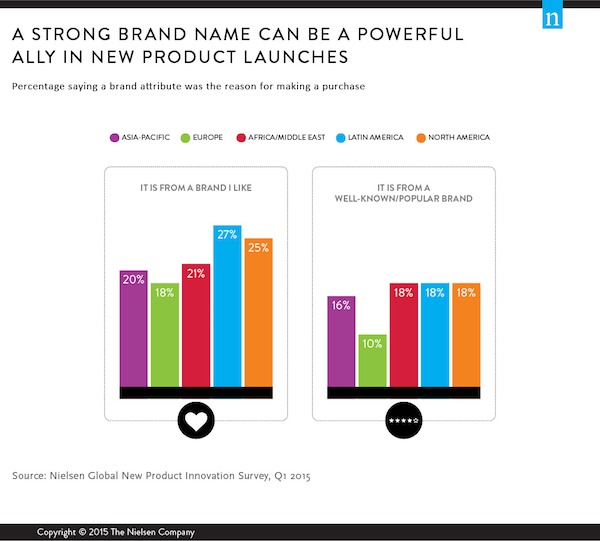
Image Source
Familiar faces are more likely to get the final deal.
But that’s not all.
SurveyMonkey and Search Engine Land found that 70% of consumers look for a known retailer when deciding which search result to click:
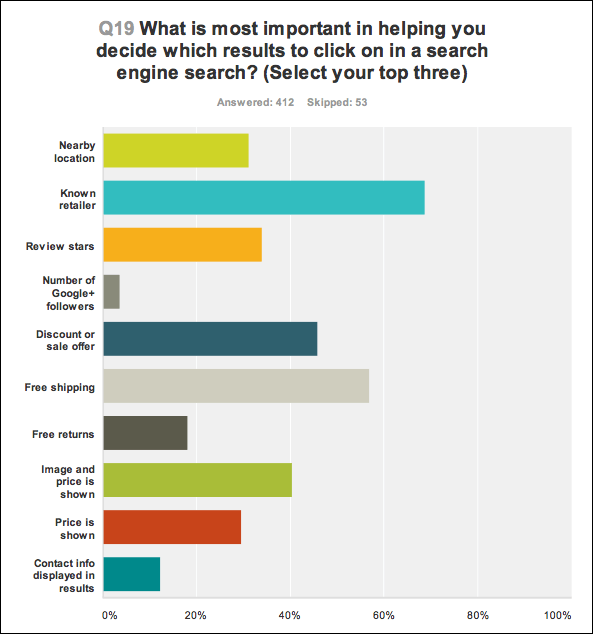
Image Source
That’s not surprising at all, really.
Think about it:
When you searched for “inbound marketing” recently, did you click on HubSpot or joeschmoe.net?
I’m gonna go out on a limb and say it wasn’t the latter.
Even if joeschmoe.net were ranking #1, you’d probably still click HubSpot at #5.
Cuz: Brand awareness = trust.
Brand recognition is a powerful way to drive sales.
And once you develop a brand reputation within your own space, you end up being able to drive traffic without having to take the normal funnel stage route.
Meaning you don’t have to pay to drive traffic anymore.
You don’t have to pay for ads and lead magnets.
You just have to focus on closing. You reduce your costs dramatically.
It’s time for some good news:
Building brand awareness is cheap.
I’m talking dirt freaking cheap. Pennies to the dollar cheap.

Image Source
According to Moz, Facebook Ads have the cheapest CPM (cost per 1,000 impressions) of any advertising platform ever.
Except they “don’t work,” right?
Maybe, maybe not. But try comparing that cost to the freaking newspaper, magazine, and radio CPMs then:
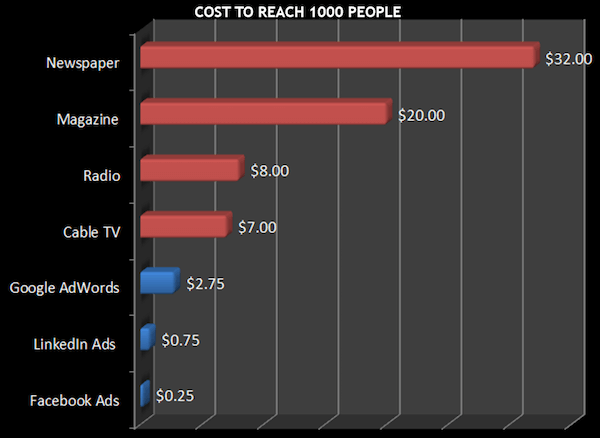
Image Source
And guess what?
You only have to spend $1 per day on Facebook as the minimum daily budget. That means you can reach 4,000 more people a day with ads based on brand awareness for a single measly dollar.

Image Source
Using expert-level mathematician skills, that’s 120,000 brand impressions each month for only $30.
That’s just about the cheapest brand exposure you’ll ever get. Like, ever.
That’s 120,000 more people seeing your brand than last month.
Here’s how to implement cheap branding on Facebook to keep your top of the funnel profitable and growing like never before.
Create a self-sustaining TOFU campaign on Facebook
Self-sustaining campaigns run and run and run.
It only takes three easy steps that you can complete in just minutes today.
Create a new, medium-sized saved audience based on your target market.
Create a remarketing audience based on those engaged users.
Create a new lookalike audience based on leads.
With this, you’ll only be spending a few bucks a day while simultaneously creating a campaign that maintains itself.
You just rinse and repeat each time the cycle completes to replenish your audience.
This way, you’re generating thousands of new visits and impressions to build brand awareness every single month.
More brand awareness = more recognition/trust = more sales in fewer funnel stages = less money out of your pocket.
To get started, fire up the Facebook Business Manager and head to the audiences section:

From here, select the option to create a new saved audience:

The saved audience is a great starting point to generate a big enough list for brand awareness campaigns.
Start by entering the basic demographic data associated with your target customers:
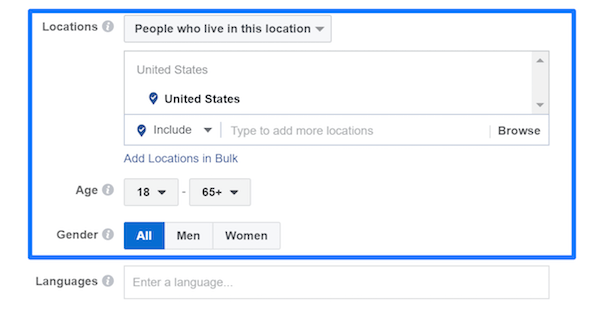
Next, it’s time to narrow it down a bit.
You can’t target 200,000,000 people with brand awareness ads. Unfortunately, there aren’t that many people who care about your company.
Start adding various interests related to your company. For example, if you sell SEO services, add that as an interest:

Are your services B2B? Narrow it down further:
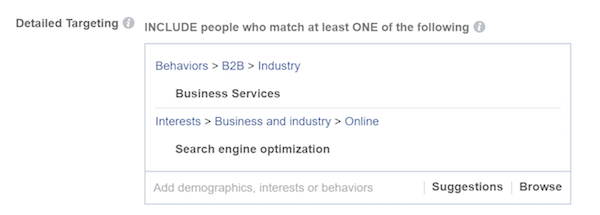
Lastly, finish it off with some exclusions to avoid targeting users who typically don’t respond well to your products or services:

Next, hit save and name your audience so that you can recognize it later.
Now, head to the Ads Manager and create a new campaign based on the brand awareness objective:
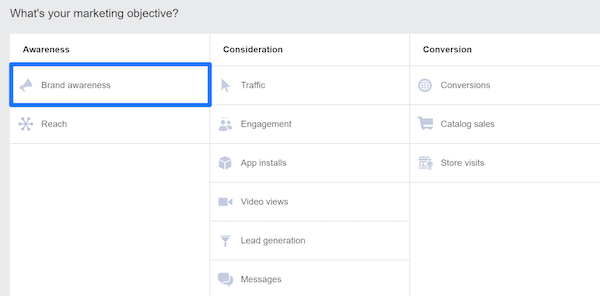
Then, scroll down to the audience section and choose the saved audience you just created:
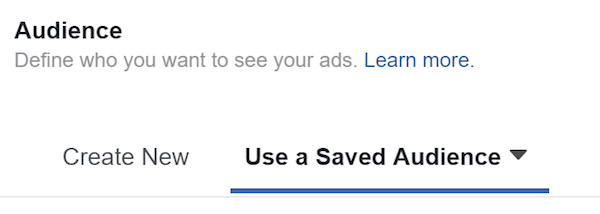
Next, set your budget to just a single dollar per day (or more if you have a larger budget):

Now it’s time for the creative.
For brand awareness ads, you don’t want to focus on converting someone to sales. Offers like that won’t resonate with users who have no clue who you are.
Give them value associated with your brand without asking for anything in return.
For example, take your latest blog post and use that as your creative.
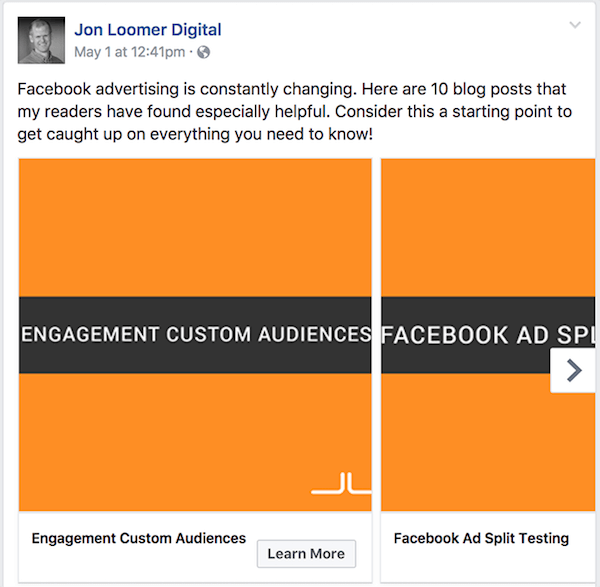
Image Source
You’re done with the first step. Next up, it’s time to set up a remarketing audience based on visits to your brand awareness blog post.
First things first, you need to get your Facebook Pixel setup if you haven’t already. Head to the Events Manager and select the Pixels option.
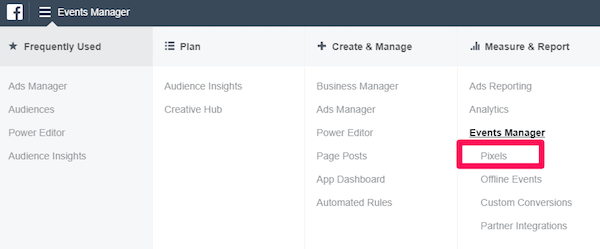
Click to create your Pixel and give it a recognizable name for your site:

Next, install your Pixel code by selecting any of the listed options:
 https://blog.kissmetrics.com/why-the-top-of-your-funnel-is-almost-always-more-profitable-than-the-bottom/
https://blog.kissmetrics.com/why-the-top-of-your-funnel-is-almost-always-more-profitable-than-the-bottom/
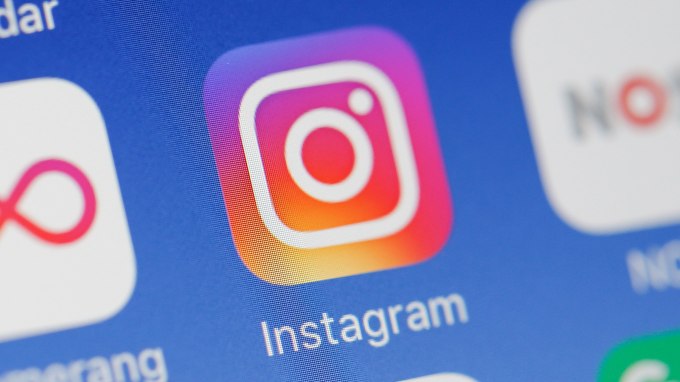 You might have noticed a new end-of-year trend on Instagram the past few days. If so, you can thank 2017bestnine.com, a website that lets you automatically collect and collage your most-liked photos of 2017. Best Nine has been around for a while, so many of you may be familiar with the tool already. But for those of you who are new to that Best Nine game, here’s how it works. First of… Read More
You might have noticed a new end-of-year trend on Instagram the past few days. If so, you can thank 2017bestnine.com, a website that lets you automatically collect and collage your most-liked photos of 2017. Best Nine has been around for a while, so many of you may be familiar with the tool already. But for those of you who are new to that Best Nine game, here’s how it works. First of… Read More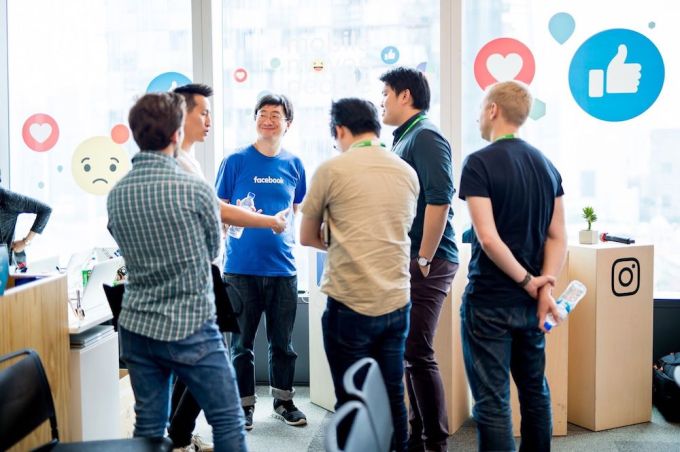 Stories about Facebook’s advertising business tend to focus on the big numbers — its billions of users, millions of advertisers or its enormous lead over any competitor that’s not named Google. But Facebook says that one of its success stories in recent years involves a relatively small group of engineers — in fact, originally it was just one engineer, Vastal Mehta,…
Stories about Facebook’s advertising business tend to focus on the big numbers — its billions of users, millions of advertisers or its enormous lead over any competitor that’s not named Google. But Facebook says that one of its success stories in recent years involves a relatively small group of engineers — in fact, originally it was just one engineer, Vastal Mehta,… 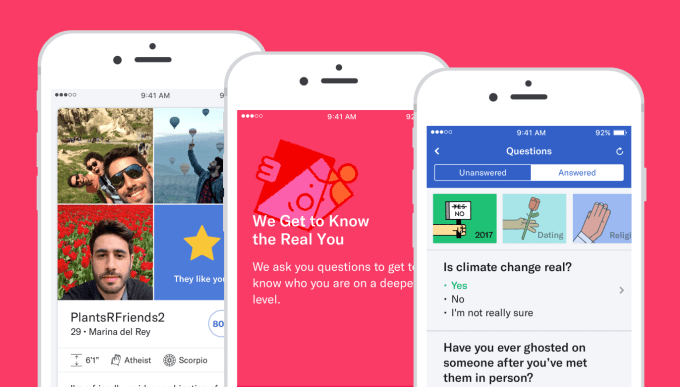 OKCupid’s users are angry – very, very angry. Just ahead of the new year, the company made a radical change to its policies, and now requires people to use real names instead of an OKCupid username, as before. The change eliminates one of the biggest differentiators between the dating app and rivals like Tinder and Bumble, which have users log in via Facebook in order to use their…
OKCupid’s users are angry – very, very angry. Just ahead of the new year, the company made a radical change to its policies, and now requires people to use real names instead of an OKCupid username, as before. The change eliminates one of the biggest differentiators between the dating app and rivals like Tinder and Bumble, which have users log in via Facebook in order to use their… 









 Snapchat users who snap and save can take a stroll down memory lane with the app’s new feature, “A Look Back at 2017.” If you’re the type that would rather ruminate than remain committed to Snapchat’s previously purely ephemeral philosophy, you can find your 2017 year in review in the memories tab. The feature is noteworthy mostly for the fact that it rips a…
Snapchat users who snap and save can take a stroll down memory lane with the app’s new feature, “A Look Back at 2017.” If you’re the type that would rather ruminate than remain committed to Snapchat’s previously purely ephemeral philosophy, you can find your 2017 year in review in the memories tab. The feature is noteworthy mostly for the fact that it rips a…  I find it truly sad the way Facebook has led us to reduce wishing friends a happy birthday to a meaningless, generic chore. It’s not Facebook’s fault. It gives us an open-ended comment box. But our laziness and sense of social obligation unfurl as a pile of “Happy Birthday!” or even “HBD!” wall posts.
I find it truly sad the way Facebook has led us to reduce wishing friends a happy birthday to a meaningless, generic chore. It’s not Facebook’s fault. It gives us an open-ended comment box. But our laziness and sense of social obligation unfurl as a pile of “Happy Birthday!” or even “HBD!” wall posts. 
















 Former President Barack Obama sat down with the UK’s Prince Harry for an extended and far-ranging interview with the BBC this week, and their conversation touched on social media, the use thereof, and Obama’s take on what the current state of social media means for human discourse. The full interview covers a lot of ground, but the breakouts regarding social media include an…
Former President Barack Obama sat down with the UK’s Prince Harry for an extended and far-ranging interview with the BBC this week, and their conversation touched on social media, the use thereof, and Obama’s take on what the current state of social media means for human discourse. The full interview covers a lot of ground, but the breakouts regarding social media include an…  The Library of Congress announced today that it will no longer add every public tweet to its archives, an ambitious project it launched seven years ago. It cited the much larger volume of tweets generated now, as well as Twitter’s decision to double the character limit from 140 to 280. Instead, starting on Jan. 1, the Library will be more selective about what tweets to preserve, a…
The Library of Congress announced today that it will no longer add every public tweet to its archives, an ambitious project it launched seven years ago. It cited the much larger volume of tweets generated now, as well as Twitter’s decision to double the character limit from 140 to 280. Instead, starting on Jan. 1, the Library will be more selective about what tweets to preserve, a…